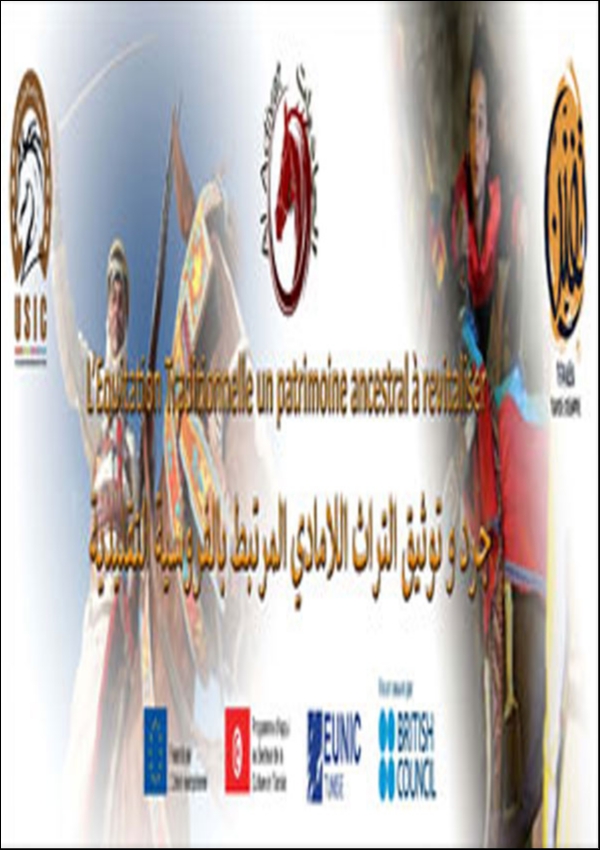
Project sheet
- Start: Monday 01 October 2018
- End: Tuesday 01 October 2019
- Regions concerned: Le KEF, Kasserine and Manouba
Partitioners
The project
As part of its Program for the rehabilitation of traditional Tunisian horse riding, and with a view to encouraging the contribution of the public sector to this effort (public institutions may be reluctant to collaborate with a union structure), the USIC encouraged in 2014 the creation of the Al Adiyat association whose sole mission is the safeguarding and promotion of Tunisian equestrian heritage.
The project consists of carrying out an inventory of traditional techniques and knowledge related to traditional horse riding based on field work in three regions renowned for this ancestral art. At the same time, it made it possible to train unemployed young people both in techniques for collecting cultural elements relating to traditional know-how according to UNESCO standards and, also, in techniques for building and mastering the horse according to tradition.
As part of this project, four expert trainers supervised eighteen young trainees, six in each region, preferably of higher academic level and unemployed, among young people who had already tried to enter the field of traditional horse riding.
During month 1, the selection was made of 4 expert trainers, 3 regional coordinators-facilitators (belonging to local associations) and 18 trainees, 3 of whom will be team leaders.
Month 1 included a 3-day preliminary theoretical training cycle which allowed the selected young people to understand the spirit and mechanisms of collecting information with a view to completing the standardized inventory sheets complying with the standards of the UNESCO according to the 2003 Convention and in compliance with it.
From month 2, collection and training work began in the regions.
For each element identified, the inventory work was recorded on a standardized inventory sheet provided by a PCI expert. The inventory of the various heritage elements identified was carried out with the prior, free and informed consent of the communities and in collaboration with them. This is why all holders of traditional knowledge and know-how questioned previously provided a document attesting to their desire in this regard. Each inventory sheet was accompanied by all the necessary iconography: documentation, sound recordings, photos, videos, etc.
This iconography has been completely digitized or produced directly in a usable digital format for inclusion in a database searchable on the Internet. In addition, all of the information collected (all formats combined) has been precisely dated and provided with information regarding its geographical origin so as to allow the geolocation of all of the information collected on the Internet. The inventory sheets served as a starting point for developing lists of elements which were recorded in a register. This register was then published as a brochure in pdf format. All inventory work was therefore fully recorded on digital media including all the material developed and collected: texts, images, video, etc.
Every week, the material collected was recorded in a digital database created for this purpose. This made it possible, in addition to the gradual development of the inventory, to carry out work of monitoring, evaluation and adjustment of the regions in relation to each other (see the link below):
https://www.cheval-tunisie.com/fr/projet-lequitation-traditionnelle/
A collective evaluation meeting was organized every two months.
Month 12 was reserved for the finalization of the inventory and a restitution service for the trainees.





